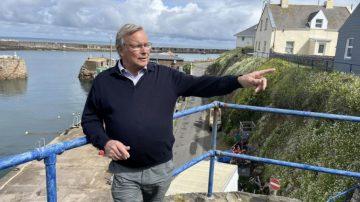The latest Alderney Electronic Census Report reveals the Island’s population increased by 72 to 2,102 people (+3.5%) in the year ending 31st March 2021 – the sharpest increase since 2018.
The census also shows that just under three-quarters of people of working age (16-64) were in full-time education, employed or self-employed at the end of March 2021.
And for the first time since 2008 the number of births exceeded the number deaths, albeit by just one. During the year in question there were 17 births and 16 deaths.
“The census provides invaluable data on the key trends in population, housing and employment,” said Ian Carter, Deputy Chairman of the Island’s Policy & Finance Committee. “It enables us to form policy and in many respects confirms the initial direction we are taking with our Island Plan to ensure Alderney’s future prosperity.”
This is the eighth Alderney Annual Electronic Census Report providing a detailed snapshot of the demographics and housing situation of the population on 31st March 2021. It also contains basic demographic trends and information on immigration, emigration, births and deaths over the past five years.
Despite the travel restrictions in place during 2020 and early 2021, the total number of people moving to Alderney during the year ending 31st March 2021 was higher than in 2019 and 2020, while the total number of people leaving the island saw a decrease when compared to previous years.
Total net migration, the number moving to the Island minus the number leaving, was +72 during the that year. Added together, figures over the five years to 31st March 2021 reveal a net inward migration of 170 people.
34% of people who immigrated to Alderney had previously been living in Guernsey
The majority (60.7%) of immigrants who arrived during that year were new to the island, a higher proportion than during the year ending March 2016 (55.0%) but lower than the year ending March 2020 (67.7%).
However, the number of people aged under 15 on the Island (193) has decreased by 47 since March 2011 (240), although higher than March 2020 (182). The number of people in the 16 to 64 age category has also seen a decrease when compared to March 2011. In contrast, increases can be seen in the number of people aged 65 to 84 and 85 or over when comparing March 2021 and March 2011 (increases of 174 and 46 people respectively), the product of a naturally ageing population.
There were approximately 1,012 households in Alderney on 31st March 2021, 2% more than the previous year. 38.5% were one adult households without children and 35.6% were two adult households without children. Just over half of households in Alderney at the end of March 2021 contained at least one person aged 65 or over.
The biggest increase between 2016 and 2021 was in the number of households with two people aged 65 and over, up from 12.3% of total households to 15.4% in 2021. The proportion of all three and four adult households also increased between 2016 and 2021. The average number of people per household has remained at two since 2016.
47% of the population were in full-time education or employment
Economic status At March 2021, 47% of the population were in full-time education or in employment, compared to 47.9% a year earlier; 30.4% were employed and 7.7% were self-employed.
Overall, 73.7% of the population aged 16 to 64 were either in full-time education, employed or self-employed. Fifteen people were unemployed (in contact with the job centre during the last week of Q1 2021 and actively seeking work).















